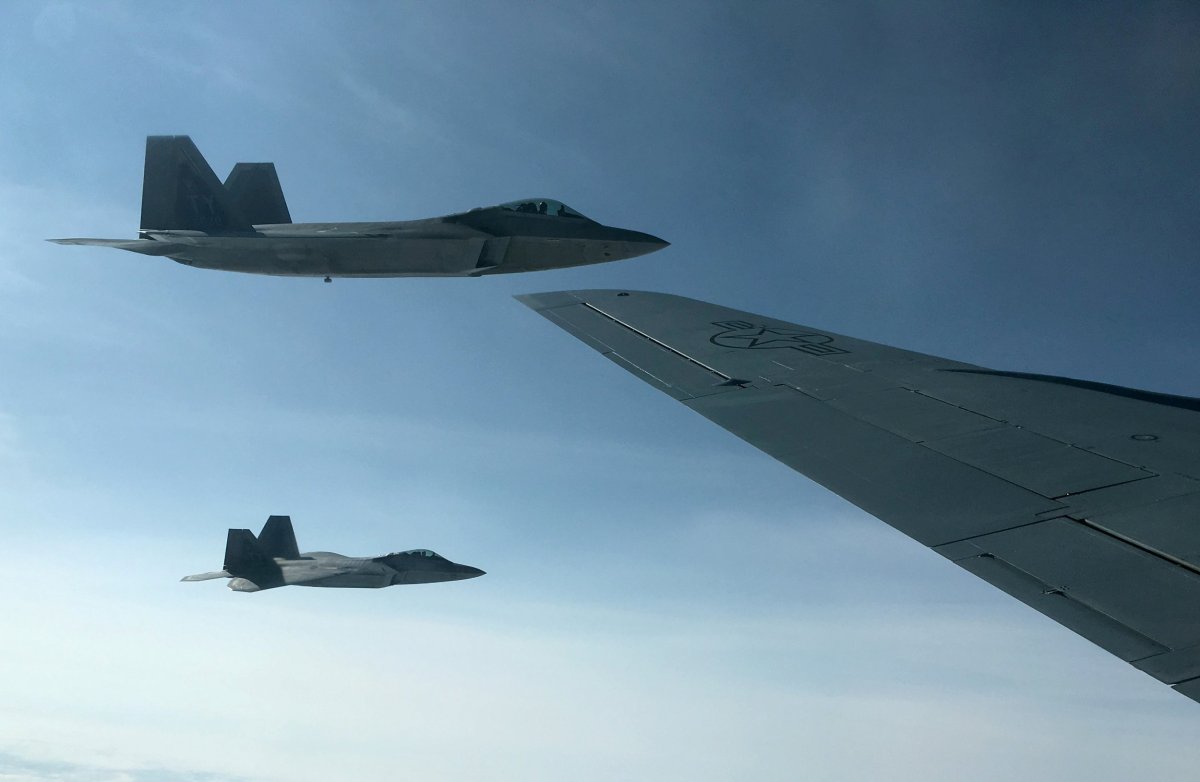Two Russian fighter jets escorting nuclear-capable bombers were intercepted by two American F-22 "Raptor" fighter jets near Alaska on Tuesday.
In a statement on Wednesday, the North American Aerospace Defense Command (NORAD) said that the two Russian TU-95 "Bear" bombers "intercepted west of mainland Alaska were accompanied by two Russian SU-35 'Flanker' fighter jets.
"The Russian aircraft remained in international airspace and at no time did the aircraft enter United States or Canadian airspace," the statement said, adding that the bombers were intercepted while flying through the U.S. Air Defense Identification Zone.
The incident marks the third of its kind to occur this year. Earlier this month, on September 1, U.S. F-22s intercepted Russian bombers near the Aleutian Islands off Alaska's coast. However, unlike the incident this week, the bombers were not accompanied by fighter jets. In May, the U.S. also intercepted another two Russian bombers off Alaska's coast.

In a statement to Russian news agency TASS, the Russian Defense ministry confirmed the incident earlier this month.
"Tu-95 MS strategic long-range bombers of the Russian Aerospace Forces performed scheduled flights over the neutral waters of the Arctic Ocean, the Bering Sea and the Sea of Okhotsk. At some stages of the route, the aircraft of Russia's Aerospace Forces were escorted by two F-22 fighter jets of the U.S. Air Force," they said.
After one of the previous incidents', a U.S. official told CNN that the military views the flights as non-threatening and routine.
On Wednesday, Russia's military posted a video showing two TU-95 "Bear" bombers and fighter jets flying out from an eastern airbase. It is unclear when the footage was taken.
"The homeland is no longer a sanctuary and the ability to deter and defeat threats to our citizens, vital infrastructure, and national institutions starts with successfully detecting, tracking, and positively identifying aircraft of interest approaching US and Canadian airspace," said Gen. Terrence J. O'Shaughnessy, commander of NORAD.
"NORAD employs a layered defense network of radars, satellites, as well as fighters to identify aircraft and determine the appropriate response."
Uncommon Knowledge
Newsweek is committed to challenging conventional wisdom and finding connections in the search for common ground.
Newsweek is committed to challenging conventional wisdom and finding connections in the search for common ground.
About the writer
To read how Newsweek uses AI as a newsroom tool, Click here.








